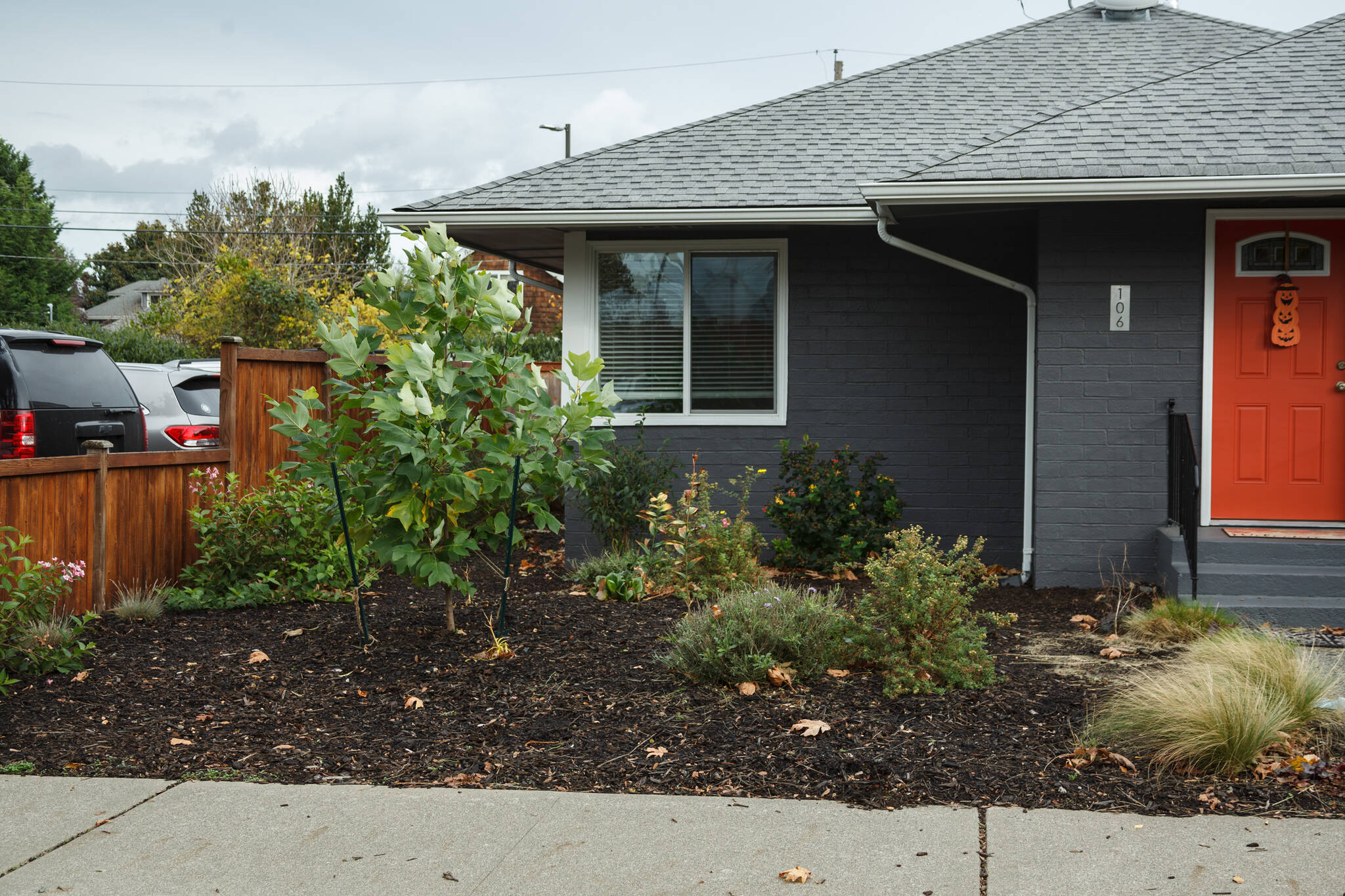Replacing your lawn with native plants can save you time and money while also helping the local environment and wildlife.
Grass lawns are so ubiquitous in American suburbs that many people don’t stop to consider the alternatives, said Debbie Meisinger of the King Conservation District.
“It’s become such a cultural norm that I think people just automatically assume that that’s what their house is supposed to look like — they’re supposed to have the house and the lawn and the picket fence,” Meisinger said.
Grass lawns have negative effects on several aspects of the environment, Meisinger said.
“They’re high maintenance, they require a lot of water and chemical usage,” Meisinger said.
In order to keep a lawn green, especially during the summer, copious amounts of water and chemicals are needed because the grass in lawns isn’t native to Washington.
In addition to this, grass lawns don’t provide any ecological benefits, unlike natives plant species, Meisinger said. Grass doesn’t allow water to soak into the soil, which causes a variety of problems, Meisinger said.
“Lawns also tend to act as an impervious surface where the water will roll off the lawn instead of percolating into the ground,” Meisinger said.
Pollutants in water are naturally filtered by the soil, but when water runs off of grass lawns and into storm drains or surface water, no filtration takes place. This means that all of the chemical fertilizers used in lawn care as well as the pollutants in rainwater go directly into the area’s streams, rivers and the Puget Sound, Meisinger said.
The best way to fix these issues is to plant a variety of native plants in your yard, Meisinger said.
“Having more diversity of native plants, trees, shrubs and ground covers just provides more habitats for wildlife,” Meisinger said. “But also sometimes lawns are also not successful in certain areas where you have dead zones. Using a variety of different plants can make that area more attractive.”
The easiest way to start replacing your lawn with native plants is to find a part of your lawn that doesn’t grow well or that you don’t like to mow. The next step is to identify what type of soil you have in order to determine what plants will thrive, Meisinger said.
Once all that is figured out, you can sheet-mulch the area where you want to grow native plants by covering the grass with cardboard and wood chips, Meisinger said. This is simpler than digging up the sod or using chemicals to kill the grass, but the effect is the same.
You can also plant your plants first and cover the surrounding grass with cardboard and wood chips, Meisinger said. Once you’ve planted the native species, nature will more or less do the rest.
“It provides more diversity and vegetation where different native animals and insects are attracted to native plants. They’ve evolved together, so it will attract more wildlife and pollinators,” Meisinger said. “Having roots that are well below the surface of the soil helps create pore space where water can infiltrate into the soil.”
Having strong roots also strengthens the structure of your soil so erosion is less likely to happen, Meisinger said.
Choosing a variety of plants that fruit and flower at different times of the year can benefit wildlife year-round, Meisinger said.
As mentioned before, native species are also good for water. They “recharge” the groundwater. This means water is stored year-round underground, even in the dry summer, which allows plants to survive during times of drought. It also means water is filtered by the soil before making its way to rivers, streams, lakes and other bodies of water.
In addition to this, native plants can also help to reduce flooding during times of intense rain, Meisinger said. Because the majority of yards are covered in grass, when it rains, most of that water rolls off and into the streets, contributing to flooding. If more people had native plants, more water would actually make it into the soil rather than into the streets, Meisinger said.
Replacing grass with native plants can reduce the amount of upkeep your yard needs, Meisinger said. For the first year or two, you might have to water the plants during the summer, but once it’s acclimated to the seasons, the plant can survive more or less on its own.
There’s a saying — “sleep, creep and leap” — to describe the process of planting native plants, Meisinger said. In the first year you can expect your plant to sleep and get adjusted to its new environment. In the next year or two, it will creep and slowly start to grow. After about three or four years, it will leap and grow rapidly.
Planting native species in the fall is suggested because you won’t have to worry about watering until the following summer, Meisinger said. But even then, watering isn’t always strictly necessary, but it will help the plant thrive. After one to three years, you won’t have to do any watering, Meisinger said.
“It’s going to save you time and effort in mowing, raking and watering or using chemicals and it’s going to be beneficial to native wildlife,” Meisinger said.
If you’re planting in the fall, you can use potted plants. In the winter, you can use bare-root plants, which are a lot more affordable, Meisinger said.
To make things easy for people looking to replace their lawn, the King Conservation District holds an annual online plant sale on Nov. 15 where people can buy 10 plants for around $15, Meisinger said. Visit the King Conservation District website for more information.
Talk to us
Please share your story tips by emailing editor@kentreporter.com.
To share your opinion for publication, submit a letter through our website https://www.kentreporter.com/submit-letter/. Include your name, address and daytime phone number. (We’ll only publish your name and hometown.) Please keep letters to 300 words or less.

